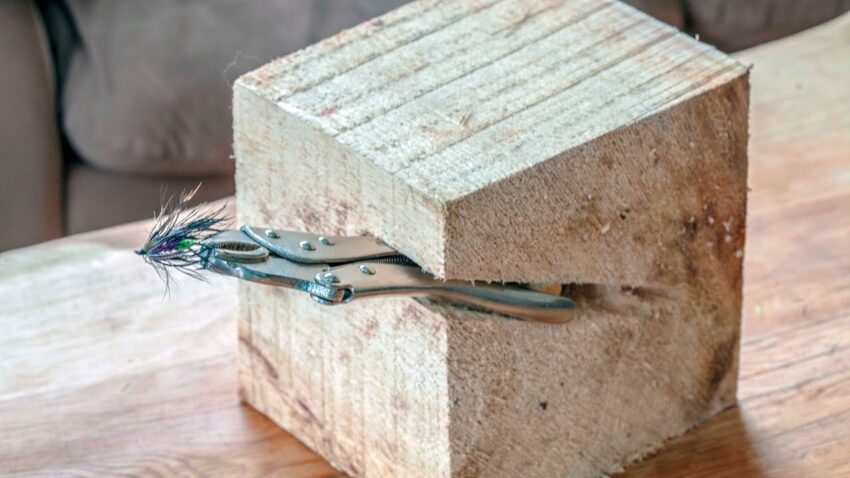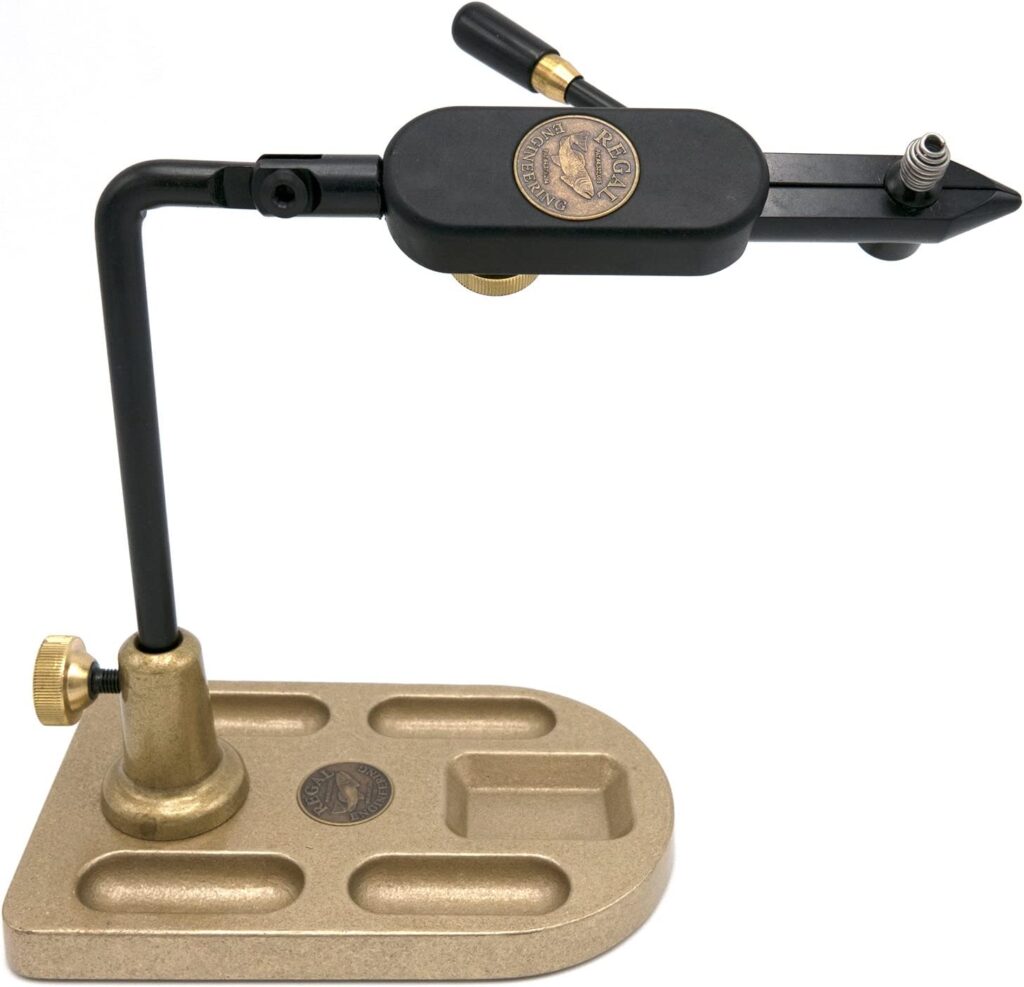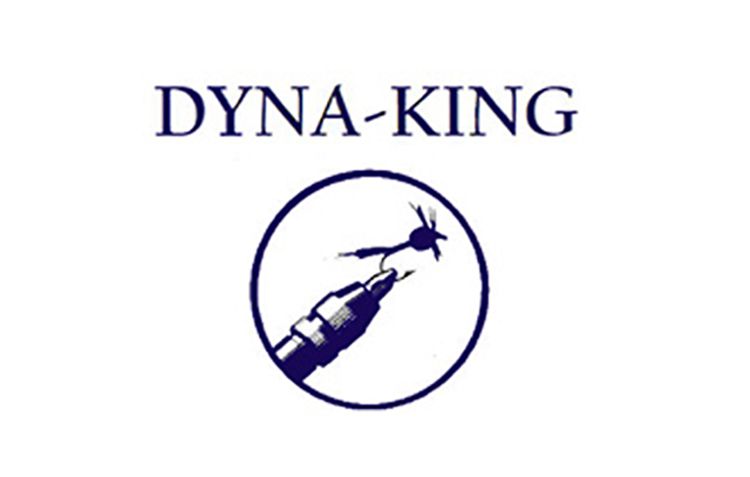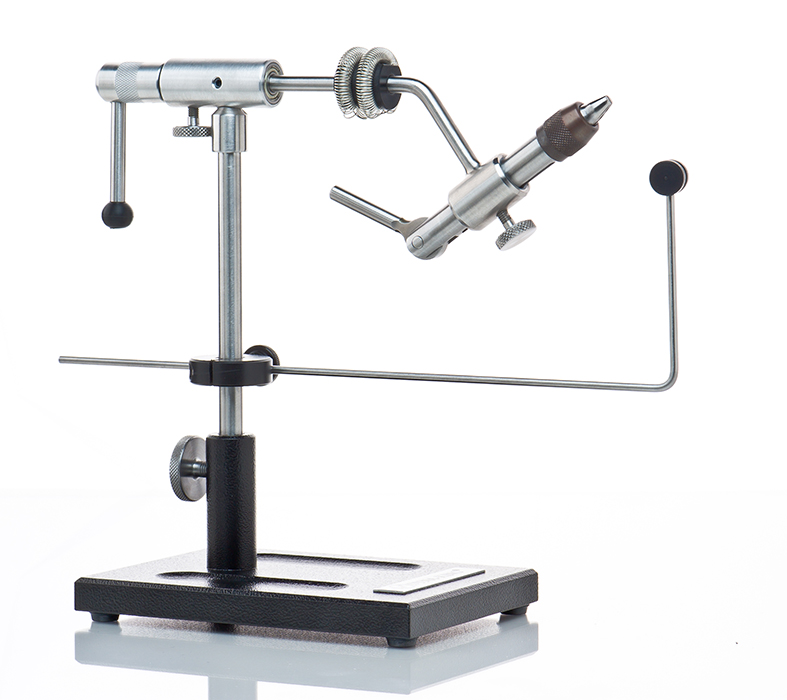
Fly Tying Vise – Buyers Guide
A Fly Tying Vise is the most frequently used tool you own as a fly tier. Unless you are one of those crazy free-hand folks, every fly you tie starts with slapping some steel in the vise. As with many fly tying tools, vises come in a wide range of prices and with varying degrees of bells and whistles. The way I came to appreciate the relative cost difference in a decent fly tying vise is starting out with one that came as part of a kit. Along with horrible hackle, cheap hooks and fairly useless materials, this vise clamped to the edge of a table and was slightly worse than not having a vise at all. Hooks slipped, the harder I tightened the worse it got, the lever bent and it eventually refused to hold a hook smaller than a 1/0.
Fast forward to today and you will find several reputable manufacturers that produce vises that are effective, durable and made to last at fair price points. Here is the criteria for a vise that will serve you well:
- Base – Decent clamp mount or adequate pedestal base. I prefer a pedestal model if you are not frequently traveling with the vise (or can afford a little extra weight in your bag). Beyond being more travel-friendly, C-clamp vises allow you to maximize workspace on your bench and can hang over a waste collection bag a bit better. You can buy a C-clamp for all these pedestal models so go with the pedestal if on the fence to start or, just get both and get it over with. A word of caution, no matter how you shim the C-clamp, you are going to notice marks or discoloration on the table or bench where it is clamped if left for a long time or overtightened.
- Rotary (rotation) – Even if you don’t use it to spiral material around the fly, it is most helpful to be able to move the fly around during the tying process. I have this as criteria simply because you may not know you want or need a rotary vise at this point and you can always lock a rotary vise but can’t rotate a fixed vise. Note that Regal may not be considered a true rotary vise but does rotate.
- Jaws – Clamping mechanism that is strong and easy to engage and jaw design that will hold fast. These vises have standard jaws that fit size 20 or smaller hooks all the way up to beyond 1/0. Most have options to better suit smaller flies versus bigger flies or specific fly tying scenarios. Do some homework and get what works for you.
- Quality – Experience proves the way to sell them cheaper is to make them cheaper. The biggest difference (not the only one) between a quality vise and the others comes down to the parts that hold the hook in place. Hardened steel jaws, machined clamping mechanisms and tight tolerances.
- Warranty – These are reputable companies that stand behind the products they sell. These manufacturers take pride in their work and have been in business long enough to know that things occasionally happen and they know how to handle it.
Beyond those things, you can consider finishes, additional bases, upgradability, accessories and how it fits the flies you tie.
Big Players in the Fly Tying Vise Game
This is a “can’t go wrong” list. There are other reputable companies that make vises nowadays and may not be listed below. I do not specifically endorse any of these brands or make any commission if you decide to buy one from these companies. All prices are shown as of the date of this post from the manufacturer or single dealer source. Visit each brands website to see other models and find out more informaiton.
Renzetti

Renzetti has the claim to the first true rotary vise which they produced in 1973. Renzetti is a family-owned business and makes the entirety of its production components and final products in the USA. The model listed below is a very capable vise and what I would consider the best value (quality for the price) of the list:
Vise Price (as pictured below): $239.99

Regal

Regal is also a family-owned business located in Orange, MA. Their vises have a unique jaw system compared to others. Instead of inserting the hook in slack jaws and tightening, the jaws are spring loaded in a compression state and you open them, insert the hook and use the handle to return the pressure. The jaw holder is also adjustable and rotates around the fixed axis. While, arguably, not a true rotary vise (one that uses a handle to spin the head around with the ability to align the hook shank with the center axis) it does meet the requirement of being able to rotate the fly as you tie it. If you want a true rotary vise, this might not be for you. Regal offers lots of head colors and base options as well as an extensive line of accessories.
Vise Price (as pictured below): $275.00

Dyna-King

Dyna-King is also a family-owned business located in Cloverdale, CA. The differentiator for the Dyna-King vice is the all stainless steel construction (except for the jaws which are hardened tool steel). A double material clip and bobbin holder are included.
Price: $485.00

Others to Consider
- MORE FOR LESS – Wolff Atlas – $193 for entry-level vise. Includes pedestal base and C-clamp.
- GREAT VALUE – PEAK Fishing – $200 will get you into a nice vise.
- MOST VERSATILE – NOR-VISE – $395 for standard vise. Unique “straight” design.
Leave your thoughts below or contact me if you have a favorite that I have left off the list.
12 thoughts on “Fly Tying Vise – Buyers Guide”
I haven’t checked in here for a while as I thought it was getting boring, but the last few posts are good quality so I guess I’ll add you back to my everyday bloglist. You deserve it my friend 🙂
I’d have to test with you here. Which isn’t one thing I normally do! I enjoy studying a put up that may make people think. Additionally, thanks for permitting me to remark!
47vuow
Hey are using WordPress for your site platform? I’m new to the blog world but I’m trying to get started and create my own. Do you require any html coding expertise to make your own blog? Any help would be greatly appreciated!
After all, what a great site and informative posts, I will upload inbound link – bookmark this web site? Regards, Reader.
Viagra * Cialis * Levitra
All the products you are looking an eye to are currently available in support of 1+1.
4 more tablets of unified of the following services: Viagra * Cialis * Levitra
https://pxman.net
Este site é realmente fantástico. Sempre que consigo acessar eu encontro coisas boas Você também pode acessar o nosso site e descobrir mais detalhes! conteúdo único. Venha descobrir mais agora! 🙂
Este site é realmente incrível. Sempre que consigo acessar eu encontro coisas boas Você também vai querer acessar o nosso site e saber mais detalhes! informaçõesexclusivas. Venha descobrir mais agora! 🙂
Great website. Plenty of useful info here. I?¦m sending it to some friends ans also sharing in delicious. And certainly, thanks to your sweat!
I have been surfing online greater than three hours lately, yet I by no means discovered any interesting article like yours. It’s beautiful worth sufficient for me. In my opinion, if all web owners and bloggers made just right content material as you did, the net might be a lot more helpful than ever before. “Learn to see in another’s calamity the ills which you should avoid.” by Publilius Syrus.
Its like you read my mind! You appear to know so much about this, like you wrote the book in it or something. I think that you could do with some pics to drive the message home a bit, but other than that, this is wonderful blog. A great read. I will certainly be back.
Rattling fantastic info can be found on website.